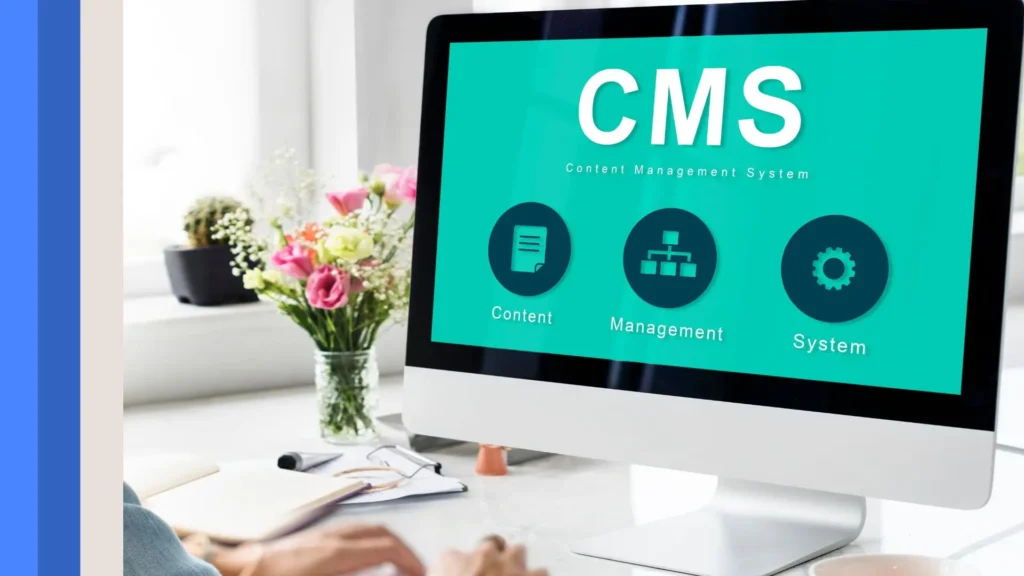With the way things are moving today, businesses need a website to keep up. Still, you need to be sure your site is built carefully. Any business hoping to be different, keep users interested, and see results needs a solution that goes further than simple templates. To achieve their aims and showcase their brand well, businesses need a custom website built with their audience in mind.
- What is Custom Website Design and Development?
- Why Choose a Custom Website Over a Template?
- Key Components of Custom Website Design
- Core Elements of Custom Website Development
-
The Custom Website Development Process
- 1. This part is about research and planning the development of your product
- 2. The process consists of wireframing and prototyping
- 3. Design Mockups
- 4. Development
- 5. Testing, the process used here, caters to every concern about the overall quality of the final product
- 6. Launch
- 7. Ongoing support and upkeep
- Common Features in Custom Websites
- What conditions call for having a Custom Website?
- What It Costs to Build a Custom Website
- Conclusion
- FAQ's
Custom website design and development begins with building a website from the ground up to meet the needs of one organization. Custom-made websites can be changed easily, perform well, preserve your branding, and expand as your business expands, more than generic builders or pre-made designs.
We will examine what custom website design and development involve, the advantages, the steps needed,d and why it supports a business’s lasting progress.
| Feature | Custom Website | Template-Based Website |
|---|---|---|
| Design & Branding | Unique and tailored to reflect the brand identity | Generic look shared with many other websites |
| User Experience (UX) | Designed specifically for target users, devices, and flows | Limited to pre-set structures and features |
| Performance | Optimized code for speed and functionality | Often includes bloated code, leading to slower load times |
| Scalability & Flexibility | Easily scalable and customizable for future growth | Harder to adapt or expand beyond existing limits |
| Security | Custom security features implemented from scratch | More vulnerable to common attacks due to widespread use |
| SEO Optimization | A generic look shared with many other websites |
What is Custom Website Design and Development?
In website design for clients, developers concentrate on features that are specific to the business’s look and customer satisfaction. It means designing the page’s layout, choosing colors, selecting fonts, using images, and designing for ease of use.
The main goal in custom website development is to create the site’s structure and functions using various computer languages. Developers typically rely on HTML, CSS, JavaScript and PHP, Python or Node.js to code site databases, handle interactions with servers, ensure safety and achieve other goals.
Joining design and development yields a product that is easy to use, matches its brand, and runs smoothly.
Why Choose a Custom Website Over a Template?
Though templates such as those for WordPress or Wix, and Squarespace help you build a site easily and economically, they have some drawbacks. Here’s why a custom website is sometimes the way to go:
1. Unique Branding
Your brand’s identity is completely reflected in a custom-made website. Colors and the design of every page are chosen to express your brand’s values, the way it feels and its mission. You are not like thousands of companies using the same template when you do it this way.
2. A better user experience (UX)
Your users are at the heart of any custom website. Strategic designers and developers can design user experiences that are appropriate for your group and ensure all website pages are simple to use and functional on all gadgets.
3. How flexible and adaptable the system is to change
When your company grows, your website should be updated. Adapting or improving a website built specifically for a company is much easier than scaling and altering an off-the-shelf solution.
4. Better Performance and Better Search Engine Results
Often, templates are built with too much code, which equals a sluggish website. Because custom sites include clean and optimized code, they load fast, achieve good SEO results, and rank highly on search engines.
5. Enhanced Security
Robust security measures can be included in custom websites, which helps prevent the common hacks found on ready-made site templates.

Key Components of Custom Website Design
Designers make sure a high-quality custom website is both beautiful and user-friendly.
1. Designing UI and User Interfaces
Both design and user interaction are aspects of UI for a website. It has buttons, menus, icons, typography, and layouts that help users navigate and work well with them.
2. Responsive Design
Sites customized for a business have to display and work well on all devices, including computers, tablets, and smartphones. The look and usability of a site are maintained when designers adjust its design for various screen resolutions.
3. Brand Integration
The website’s logo, colors, style of images, and how you write everything ought to relate directly to your brand. Using a custom design guarantees harmony with the rest of the company’s marketing.
4. Accessibility
Experts in design must consider users’ disabilities. You can design custom websites to be accessible according to WCAG, which guarantees that everyone can use them and that the website is legal.
Core Elements of Custom Website Development
Development uses code to build and produce the design vision as a live and functioning website.
1. Front-End Development
The user deals with this when using the site. HTML, CSS, and JavaScript help form how the layout, animations, and other interactive parts look in web pages.
2. Back-End Development
The back-end is what makes everything on the site work. It works with databases, uses logic on the server side, takes care of user authentication, and incorporates third-party elements.
3. A Content Management System (CMS)
Although some sites are fixed pages, most custom sites now use content management systems that let administrators update content without editing code.

4. Database Integration
Often, custom websites must manage user data, product lists, and other information. This responsibility is managed with the help of databases such as MySQL or MongoDB.
5. Security Features
Developers use SSL encryption, set up firewalls, install anti-spam filters, and create secure ways to authenticate users to help safeguard the website.
The Custom Website Development Process
A series of steps is used to build a custom website so it runs smoothly and is successful.
1. This part is about research and planning the development of your product
At this point, the team needs to learn what the project requires, establish goals, check out competitors, figure out who the users are, and set up a detailed timeline.
2. The process consists of wireframing and prototyping
Wireframes are simple drawings that show the main organization of a website. Often, prototypes show wireframes as a functioning mobile app that can be used to test user navigation before development.
3. Design Mockups
Designers show colors, fonts, images, and UI elements by presenting high-fidelity mockups. A client reviews these files and needs to give their approval.
4. Development
The front and back ends develop when the design has been approved. Features, animations, and integrations are written in code and tested one step at a time.
5. Testing, the process used here, caters to every concern about the overall quality of the final product
Thorough tests evaluate the performance, the site’s functions, its reaction to changes, its accessibility, and how well it works in different browsers. Problems with bugs are recognized and corrected.
6. Launch
Once final approval is granted, the website appears online for viewers. DNS information is refreshed, file transfers take place on the production server, and analytic systems are turned on.
7. Ongoing support and upkeep
After launch, developers regularly update, secure, backup, and monitor the application for you.
Common Features in Custom Websites
The features available on a custom website depend on what the company wants to achieve and its business style.
- Offering an online shopping experience (with product cart and different gateway options)
- You can access your client area with member portals or logins.
- Appointment reservation systems
- Using forms to get valuable leads
- Blog and news posts
- Multilingual support
- Better search options

What conditions call for having a Custom Website?
- You should choose a custom website if
- You know what functionality you require
- Your business is part of either a competitive or a specific industry.
- Building a brand is key to success in your business
- You’re looking for complete control over user experience and user interface
- You have to integrate or join with complicated systems.
- SEO and performance are the most important objectives.
What It Costs to Build a Custom Website
Prices may be very different depending on the details of the project, how much developers charge and what the project includes. A minimum custom site can be made for $5,000 to $10,000, but complex solutions might cost an agency $20,000 to $100,000 or even more.
Remember that this process takes a long time. A well-developed website can generate more leads, encourage more conversions, and build more trust with customers, all of which measure your return on investment.
Conclusion
Today, your audience often accesses your business from your website before anything else. Tailoring the design and development of a website ensures the initial look makes an impact, stays in people’s minds, and is successful.
Even though templates are enough for easy projects, custom websites make your website so much more effective. The right designers and developers can give you a platform that both looks the best and performs well, made just for your business and your users.
If you want to make a change in your industry, building a website designed especially for your business is an intelligent decision, whether you’re just starting or have been around a while.
FAQ’s
Custom website design is planned and developed to reflect a business’s brand, how its website should operate, and what its users want. It gives you full control over the way websites work, expand, and perform. Designers using templates have quicker and cheaper opportunities to make a website, but current styles and layouts may not adjust to future needs..
Depending on what is needed for a website, development can take longer or be completed more quickly. In most cases, the entire process covers discovery, design, development, testing, and is finished off with deployment, and it takes around 8 to 16 weeks. Creating big or complicated websites often takes a lot of time, usually several months.
Custom-made websites are often better at SEO since they have properly optimized code, load speedily, and are designed with personal content organization. Programmers can and should include these SEO tactics during the development phase: structured data, mobile responsiveness, and optimized metadata
Several things determine the cost of a custom website, like the features, design complexity, what content is needed, and what integrations are involved. Basic custom sites are usually priced at $5,000 to $10,000, and more complex projects may cost over $50,000. It pays off over time by making your site easier to use and more likely to convert visitors.





